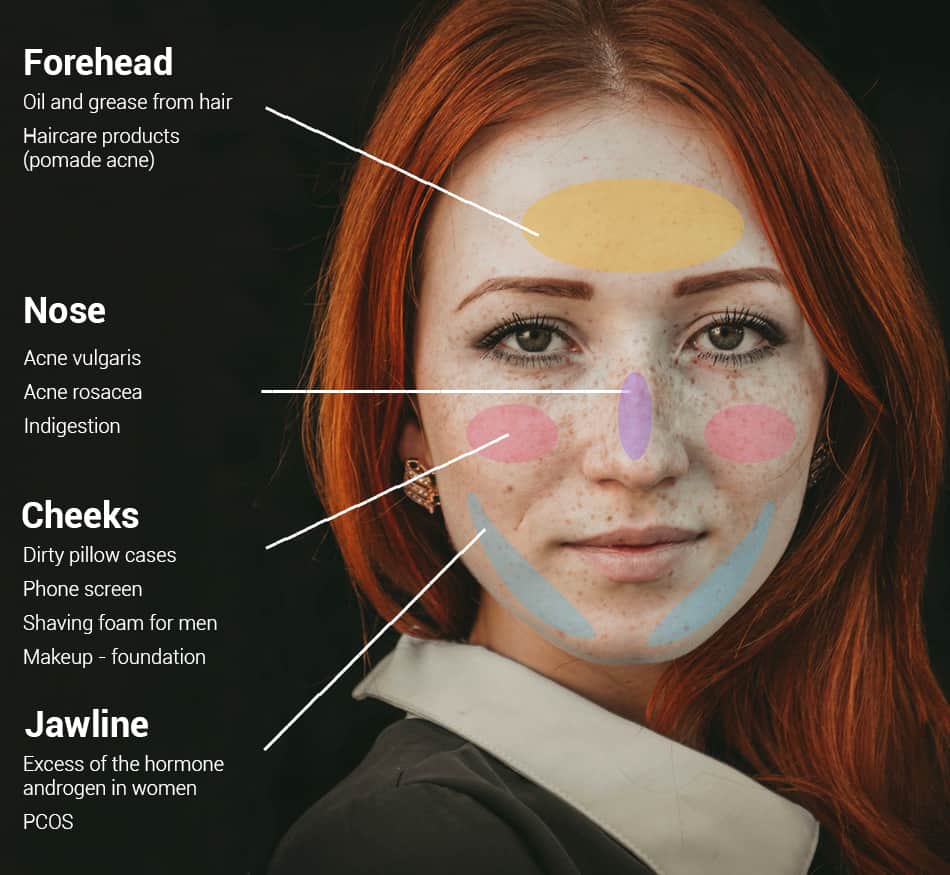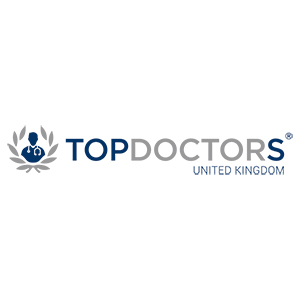Believe it or not, there’s apparently an ancient science behind the acne breakout that appears on your face. According to ancient Chinese and Ayurvedic principles, face mapping correlates the location of your spots to a corresponding internal organ and an underlying health issue.
You may have heard of ‘wine face,’ where drinking too much wine apparently leads to dark circles under the eyes, or ‘gluten face,’ which contributes to a puffy, bloated visage. We have been told that chocolate can cause a breakout, or being stressed can wreak havoc on the skin. And in women, spots on the jawline are a hormonal response to our time of the month. But do any of these hearsays or trendy social media posts really mean anything?
What is face mapping – and does it work?
Ancient medical practitioners have used observational diagnoses to narrow down symptoms within the body. But of course, back in those days, the diagnosis of a medical condition was based on examining the body without the use of the advanced technology that we have today.
According to face mapping, acne and facial blemishes develop in specific zones because of internal issues, which may include high blood pressure, dehydration, and digestive wellbeing, or even as a complaint from another organ in the body, such as the ‘angry’ liver.
There is no real scientific evidence to suggest that these principles are accurate. However, thanks to modern research techniques, we can make assessments on why and how acne happens.
What are the causes of acne?
Acne occurs when the hair follicles are plugged with oil (sebum) and dead skin cells. This leads to those pesky pimples, blackheads and whiteheads. The main causes of spots may include excess oil production, clogged pores, a build-up of bacteria and an excess of the hormone androgen. Emotional stress may not be a direct cause, but can certainly make it worse.
The skin is one of the largest organs that your body has, which works to protect us from harmful elements. That’s why it’s important to have a daily skincare regime to clean and prevent spots, blemishes and even wrinkles.
What about diet – particularly dairy – as a cause of acne?
Growing evidence suggests that there is a possible link between diet and acne, particularly with refined carbohydrates more than dairy products. A paper published in the Journal of the Academy of Nutrition and Dietetics found convincing evidence from a recent study on a group of teenagers with acne. The participants followed a diet full of low glycaemic foods and documented decreases in inflammatory acne.
Foods with a high glycaemic index, which is a ranking of carbohydrate foods according to how they affect blood glucose levels, can make blood sugar levels rise very fast and contribute to the development of acne. The blood spike increases hormones, which in turn can stimulate oil production and trigger spots. This refers to highly processed foods such as French fries, crisps, sweets and fizzy and fruit drinks.
Even though there is emerging evidence to suggest that dairy products and processed carbohydrates may aggravate acne, the overall data and research is still fairly limited. We all have that vegan friend who is thoroughly impressed with the impact that the diet has had on her skin. However, we are all individual and unique – so what may work for one person does not necessarily work for another.
Whilst there may be limited research, it can do no harm for acne-sufferers to make an elimination test. This involves removing dairy and processed carbohydrates from the diet for a few weeks to see if the symptoms improve. These foods are then slowly reintroduced one by one to see if the acne, and maybe even other symptoms such as an upset stomach, reappear.
What do my acne locations really tell me?
Here’s a look at the main areas of the face that are prone to pimples:

Hairline
Forehead acne is mainly caused by hair and haircare products. If your hair is unwashed, the oil deposits on the forehead and clogs the pores there. Haircare products contain a chemical called pomades, as well as oils, gel and wax – which are all very greasy! In fact, acne caused by hair products that are used for maintenance, straightening and styling is known as pomade acne as they more than likely contain this ingredient.
Cheeks
Acne on the cheeks can be caused by several lifestyle factors. In men, shaving cream is a contributor, whilst in women foundation or sunscreen are the culprits. Dirty bed sheets and pillowcases also store bacteria that may affect the skin on your cheeks, so washing them more often may help alleviate spots.
A study conducted by the London School of Hygiene & Tropical Medicine and Queen Mary, University of London revealed that most phone screen surfaces are contaminated with germs – faecal matter to be precise! The findings showed that even though 95% of people said they washed their hands with soap, 92% of phones and 82% of hands had bacteria on them.
This means that Brits aren’t being quite so honest about their hygiene habits after a trip to the toilet!
Holding your phone to your ear and resting it on your cheek when on a call is a very easy way for bacteria to reach the skin. General hygiene is very important!
Nose
There are two different types of nose acne: vulgaris and rosacea. Acne vulgaris is more common and related to blackheads, whiteheads, pimples and cysts. It is also likely to appear on other parts of the body. This is caused by clogged pores from an overproduction of sebum and trapped bacteria. Digestive troubles are often associated with acne on the tip of the nose, which is why it’s worth doing an elimination test.
Despite its name, acne rosacea is not true acne. The skin condition causes redness and swelling and acne-like breakouts. It is caused by inflamed blood vessels that are visible on the skin surface, which people tend to mistake as acne.
Chin and jawline
Blemishes that appear on the lower third of the face, the chin and jawline, are known as hormonal acne. Women are more likely to get breakouts in this area than men. This is due to an increase in male hormones – androgens – that stimulate the oil glands.
Some women notice more acne around the time of their period due to a shift in hormone levels. Acne can also be a symptom of polycystic ovary syndrome (PCOS) where women have a really high level of male hormones and small cysts in their ovaries.
How can I alleviate the symptoms of acne?
There are some simple steps that you can take to reduce the appearance of acne on your face.
- Don’t unnecessarily touch your face to avoid transferring bacteria
- Always wash your hands after using the toilet
- Regularly clean your phone screen with anti-bacterial wipes
- Wear less make-up and/or research brands that use chemical-free products
- Drink plenty of water to stay hydrated
- Change your bed sheets every two weeks
- Get into the habit of a skin care routine and clean your skin daily
- Grow out your fringe
- Try an elimination diet for a few weeks – experiment with the removal of dairy and sugary processed foods
- Try to get quality sleep – at least seven to eight hours a night
- Squeeze in five minutes of meditation a day if you lead a particularly stressful life
How to start a skincare regime
It’s really important to get into the habit of a skincare regime, as acne-prone skin needs love and care – and that goes for both men and women. Start with the 5 basic steps below during the evening to get into the routine.
1. Remove all make-up and dirt with a cleanser
2. Use a gentle foam wash – and try an exfoliator once a week
3. Apply a toner – put a few drops onto a cotton pad and swipe over cleansed face and neck
4. Use a moisturiser – skin repairs itself when you sleep so give it that extra support
5. Apply eye cream – if you only use eye cream once a day, then the nighttime is a good place to start
In the morning: wash your face with water, cleanse, apply toner and moisturise! Choose a moisturiser with a sun protection factor (SPF) of 20 at least.
If all else fails?
If you try the above and don’t feel satisfied with the results, you can visit a dermatologist who specialises in acne. They will be able to talk to you about a treatment plan that may involve topical creams or oral medicine.









Join the discussion